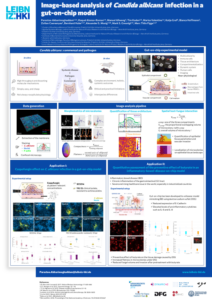In this study we investigate receptor–ligand binding in the context of antibody–antigen binding. We established a quantitative mapping between macroscopic binding rates of a deterministic differential equation model and their microscopic equivalents as obtained from simulating the spatiotemporal binding kinetics by a stochastic agent-based model. Furthermore, various properties of B cell-derived receptors like their dimensionality of motion, morphology, and binding valency are considered and their impact on receptor–ligand binding kinetics is investigated. The different morphologies of B cell-derived receptors include simple sperical representations as well as more realistic Y-shaped morphologies. These receptors move in different dimensionalities, i.e. either as membrane-anchored receptors or as soluble antibodies. The mapping of the macroscopic and microscopic binding rates allowed us to quantitatively compare different agent-based model variants for the different types of B cell-derived receptors. Our results indicate that the dimensionality of motion governs the binding kinetics and that this predominant impact is quantitatively compensated by the bivalency of these receptors.
Model for antigen binding by B cell-derived receptors
Publications
Long-term stimulation by implanted pacemaker enables non-atrophic treatment of bilateral vocal fold paresis in a human-like animal model
Walluks K*, Hoffmann B*, Svensson CM, Förster G, Müller AH, Jarvis J, Perkins J, Figge MT#, Arnold D#; *contributed equally and #contributed equally
A wide variety of treatments have been developed to improve respiratory function and quality of life in patients with bilateral vocal fold paresis (BVFP). One experimental method is the electrical activation of the posterior cricoarytenoid (PCA) muscle with a laryngeal pacemaker (LP) to open the vocal folds. We used an ovine (sheep) model of unilateral […]
Invasive aspergillosis-on-chip: A quantitative treatment study of human Aspergillus fumigatus infection
Hoang TNM*, Cseresnyés Z*, Hartung S*, Blickensdorf M, Saffer C, Rennert K, Mosig AS, von Lilienfeld-Toal M, Figge MT (2022)
Invasive pulmonary aspergillosis is associated with a high mortality rate and poses a direct threat to immunocompromised patients. Here, we present the invasive aspergillosis-on-chip (IAC) model to investigate Aspergillus fumigatus infection in vitro. The model allows the study of the lateral growth and the invasive behaviour of fungal hyphae from the epithelium into the endothelial […]
Organ-on-chip models for infectious disease research.
Alonso-Roman R, Mosig AS, Figge MT, Papenfort K, Eggeling C, Schacher FH, Hube B, Gresnigt MS
Research on microbial pathogens has traditionally relied on animal and cell culture models to mimic infection processes in the host. Over recent years, developments in microfluidics and bioengineering have led to organ-on-chip (OoC) technologies. These microfluidic systems create conditions that are more physiologically relevant and can be considered humanized in vitro models. Here we review […]








